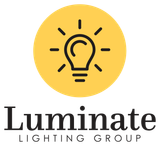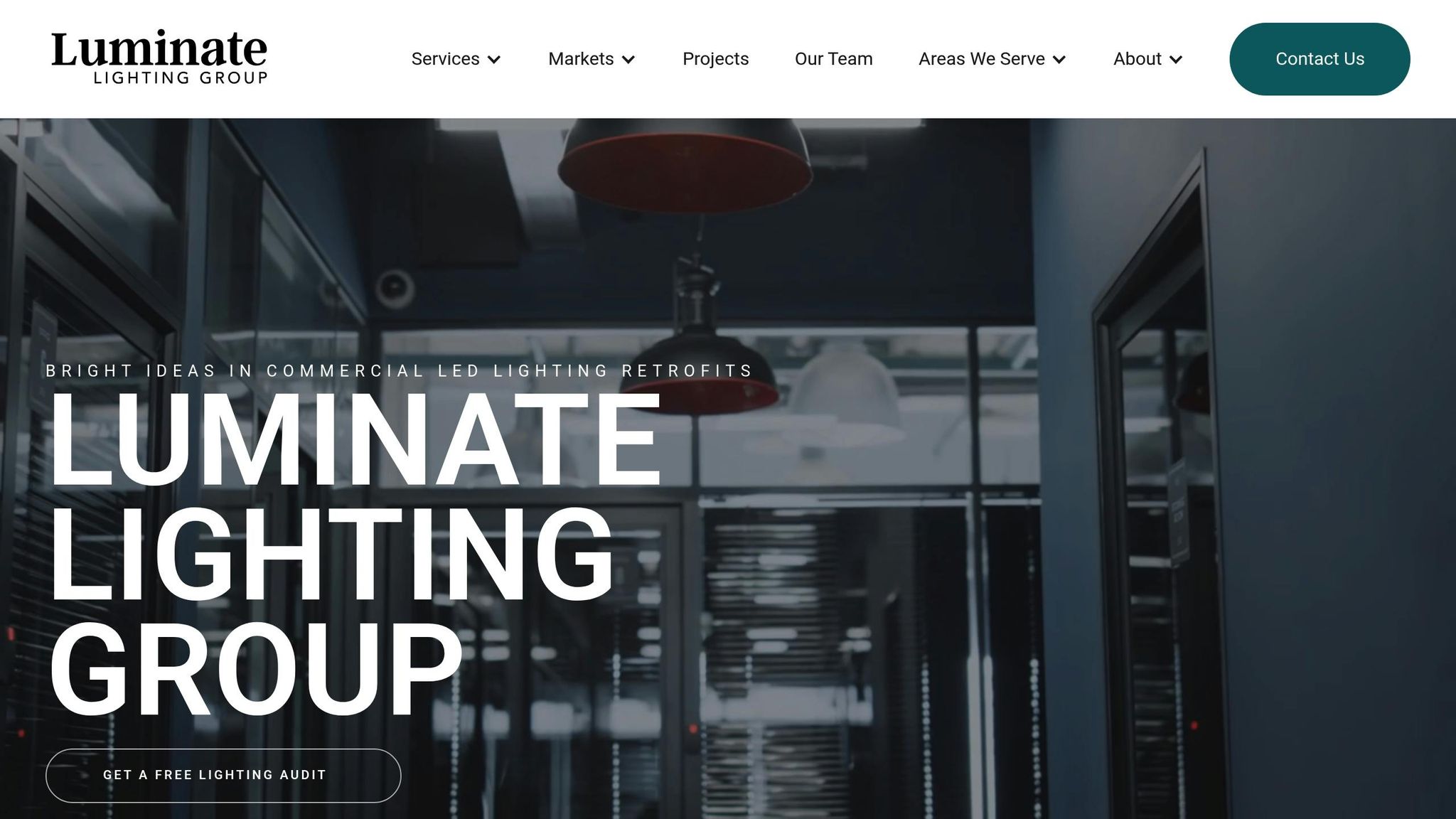Learn how to maximize tax savings through LED lighting upgrades using 179D deductions and various depreciation methods.


Upgrading to LED lighting can reduce energy costs while offering tax savings through 179D deductions and depreciation methods. Here's what you need to know:
To maximize savings, combine 179D deductions with a tailored depreciation strategy. Plan installations carefully, consider energy modeling, and consult experts like Luminate Lighting Group for compliance and optimization.
Depreciation is a tax accounting tool that helps businesses spread out the cost of major investments over several years, gradually reducing taxable income. When it comes to LED lighting systems, understanding how depreciation works can play a big role in shaping your tax strategy and improving cash flow.
The IRS categorizes LED fixtures as long-term business assets. Instead of deducting the entire cost in the first year, businesses follow a structured depreciation schedule, claiming portions of the expense over time. This allows you to align tax benefits with your business’s financial situation.
There are a few primary depreciation methods to consider when it comes to LED lighting investments. Here’s how they work:
The choice between these methods depends on your business’s current tax situation, cash flow needs, and long-term financial planning. For example, businesses with higher taxable income might prefer bonus depreciation or Section 179 for immediate savings, while others could benefit from the steadier deductions of MACRS, especially if they anticipate higher tax rates in the future.
LED lighting systems in commercial buildings are typically classified under the 7-year MACRS property category, which is standard for many electrical fixtures. Here’s how the depreciation percentages break down over the 7-year schedule:
For example, a $100,000 LED lighting project would allow for a $14,290 deduction in the first year under this schedule.
If you opt for bonus depreciation, a large portion of the cost can be deducted immediately, offering even faster tax savings. However, timing matters. If more than 40% of your annual depreciable property purchases happen in the fourth quarter, the IRS applies the mid-quarter convention. This rule can reduce first-year depreciation benefits, so scheduling installations earlier in the year might be more advantageous.
Creating a financial model to track LED depreciation helps you uncover the full financial impact of your investment while ensuring you take advantage of every tax benefit available. Here's how to get started.
The accuracy of your model hinges on collecting detailed and precise data. Begin by organizing the following key inputs:
With all this data in hand, you're ready to build an accurate depreciation schedule.
Using the collected data, create a detailed depreciation schedule by applying IRS rules and tables to your project costs.
Once the schedules are built, it's time to translate them into actionable financial insights.
Now, turn the depreciation schedules into a clear picture of tax savings and overall return on investment (ROI).
Using scenario analysis can help you see how different LED strategies impact 179D deductions. By working with your depreciation schedule, you can tweak and optimize tax benefits.
When LED projects achieve significant energy savings, they qualify for full 179D deductions. If the improvements are more moderate, partial deductions come into play. Comparing these scenarios in your model lets you measure the financial advantage of surpassing energy efficiency benchmarks.
Tax benefits can vary depending on several project-specific factors, and scenario modeling helps you explore these nuances. For instance:

Claiming 179D tax deductions isn't as simple as swapping out old lights for LED fixtures. It involves navigating energy modeling, meeting IRS compliance rules, and planning strategically to make the most of the available tax savings. That’s where working with experts can make all the difference. Luminate Lighting Group steps in with specialized guidance and turnkey solutions to simplify the process and help you achieve compliance while maximizing savings.
The 179D tax deduction comes with detailed documentation requirements, and meeting them is critical for compliance. Luminate Lighting Group provides energy audits designed to identify inefficiencies and highlight areas for improvement. Their audits generate precise energy models that estimate efficiency gains and calculate potential savings from LED upgrades. These models are key to ensuring your upgrades meet the energy efficiency standards required for 179D qualification. By working with Luminate, you gain the tools and insights needed to make a strong case for your deductions.
To fully benefit from 179D tax deductions, lighting solutions must be tailored to maximize energy efficiency. Luminate Lighting Group offers comprehensive LED retrofit services that cover everything from design and installation to permitting and utility rebate submissions. Their custom lighting designs focus on optimal fixture placement, advanced control systems, and efficient operational schedules to enhance both performance and tax savings. Licensed electricians handle installations to ensure they meet code requirements and support 179D eligibility. These integrated services not only simplify the entire process but also ensure that your lighting upgrades align with your depreciation models, delivering both energy efficiency and significant tax advantages.
Investing in LED lighting isn't just about cutting energy bills - it’s also a smart way to unlock tax savings. By combining well-planned depreciation schedules with 179D tax deductions, businesses can turn lighting upgrades into a powerful financial advantage. The real value lies in understanding how these two elements work together to maximize returns.
Time is of the essence. To qualify for these tax benefits, projects must be initiated before June 30, 2026. For 2025, businesses meeting the 50% energy savings benchmark, along with prevailing wage and apprenticeship requirements, can claim $5.81 per square foot. These higher deductions not only reward energy efficiency but also encourage workforce development, making careful planning a must to capture the full range of benefits. Navigating these IRS requirements requires precision and expertise.
While energy modeling and compliance with IRS regulations can seem complex, the payoff makes it worth the effort. Professional guidance is often the key to translating technical requirements into real financial rewards.
That’s where Luminate Lighting Group steps in. Their integrated approach tackles both the technical and financial aspects of LED investments. From conducting detailed energy audits to ensure compliance with 179D requirements to offering custom retrofit solutions, they simplify the process. Their expertise ensures your lighting upgrades meet efficiency goals while delivering maximum tax savings.
Aligning depreciation schedules with 179D deductions further amplifies the financial benefits. By testing different scenarios and project variables, you can find the strategy that best suits your facility’s energy performance and overall tax objectives. Whether you opt for full or partial deductions, a tailored approach ensures you get the most out of your investment.
The synergy between LED depreciation and 179D tax deductions presents a strong financial incentive for upgrading commercial lighting. With the right planning and expert support, these investments not only reduce taxes but also deliver long-term energy savings and enhanced facility performance - helping your business thrive for years to come.
Choosing the right depreciation method hinges on your business’s financial needs and objectives. Let’s break down three popular options:
Choosing the right method depends on factors like your taxable income, cash flow needs, and the cost of your assets. To make the best decision for your business, it’s wise to consult a tax professional who can tailor advice to your unique situation.
To take advantage of the 179D tax deduction, you’ll need certification from a licensed engineer or contractor confirming the project achieves the required energy savings - typically at least a 25% reduction in energy use. Along with this certification, make sure to maintain thorough records detailing the energy savings, project scope, and adherence to IRS guidelines.
Staying organized is key. Keep all relevant documentation, such as energy audits, design plans, and certification reports, readily accessible to verify compliance with the energy efficiency standards.
The timing of your LED lighting installation is crucial for qualifying for 179D tax deductions and taking full advantage of depreciation benefits. To meet eligibility requirements, construction must begin before important deadlines, like July 1, 2026. Getting started early ensures your project aligns with these criteria and allows you to maximize the tax advantages linked to energy-efficient upgrades.
Planning your installation ahead of these deadlines not only helps you save money but also ensures compliance with energy code standards. Plus, it opens the door to financial perks like utility rebates and tax deductions. Thoughtful scheduling can make your investment more rewarding while advancing energy-saving goals.